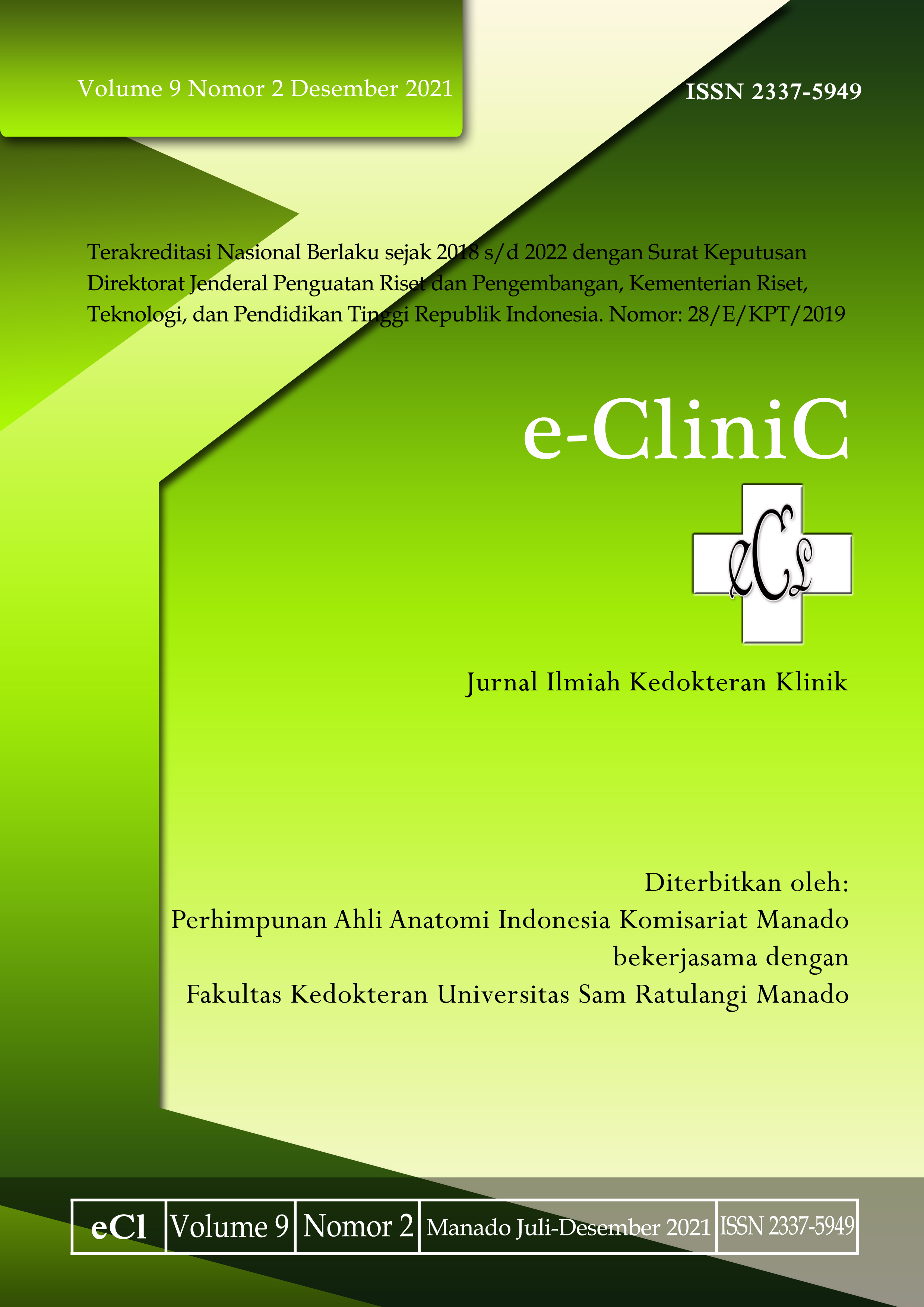Penggunaan Mineralocorticoid Receptor Antagonist pada Heart Failure Reduced Ejection Fraction
DOI:
https://doi.org/10.35790/ecl.v9i2.33144Abstract
Abstract: Heart failure reduction ejection fraction (HFrEF) is heart failure associated with decreased ejection fraction. It is characterized by abnormalities in cellular calcium regulation and changes in calcium kinetics that cause contraction changes in the myocardium. According to the European Society of Cardiology, mineralocorticoid receptor antagonist (MRA) is used as an adjunct drug when the first-line drugs are not sufficient to treat heart failure. This class of drugs has been shown to be very effective in use in HFrEF patients as shown in The Randomized Aldactone Evaluation Study (RALES), therefore, its use has been approved by the Food and Drug Administration (FDA). This study was aimed to analyze the effectiveness of MRA on HfrEF. This was a literature review study. The results showed that the use of MRA had significant benefits in reducing morbidity, mortality, and re-hospitalization in HFrEF patients. Improvements shown by the use of MRA included increased level of brain natriuretic peptide (BNP), improved NYHA classification, and decreased patient weight. A side effect that needs to be considered was hyperkalemia, whereas hypotensive effect was not of great concern because MRA was rarely reported to cause hypotension even when the initial systolic blood pressure is low. In conclusion, mineralocorticoid receptor antagonist is useful to improve the outome of HFrEF patients.
Keywords: heart failure, heart failure reduced ejection fraction (HFrEF), mineralocorticoid receptor antagonist (MRA)
Â
Abstrak: Heart Failure reduced Ejection Fraction (HFrEF) merupakan gagal jantung disertai penurunan fraksi ejeksi. Kondisi ini ditandai dengan adanya kelainan regulasi kalsium seluler dan perubahan kinetika kalsium yang menyebabkan terjadinya perubahan kontraksi miokardium. Menurut European Society of Cardiology, mineralocorticoid receptor antagonist (MRA) digunakan sebagai obat tambahan bila obat lini pertama tidak cukup untuk mengatasi gagal jantung. Obat golongan ini terbukti sangat efektif digunakan pada pasien HFrEF sebagaimana yang ditunjukkan pada penelitian The Randomized Aldactone Evaluation Study (RALES), sehingga penggunaannya telah disetujui oleh Food and Drugs Administration (FDA). Penelitian ini bertujuan untuk menganalisis efektifitas penggunaan MRA pada pasien HFrEF. Jenis penelitian ialah literature review. Hasil penelitian memperlihatkan bahwa penggunaan MRA memiliki manfaat yang bermakna untuk menurunkan morbiditas, mortalitas, dan rawat inap ulang pada pasien HFrEF. Perbaikan yang ditunjukkan oleh penggunaan MRA antara lain peningkatan kadar Brain Natriuretic Peptide (BNP), perbaikan klasifikasi NYHA, dan penurunan berat badan pasien. Efek samping yang perlu menjadi pertimbangan ialah hiperkalemia, sedangkan efek hipotensi tidak terlalu dikhawatirkan karena MRA dilaporkan jarang menyebabkan hipotensi bahkan ketika tekanan darah sistolik awal rendah. Simpulan penelitian ini ialah mineralocorticoid receptor antagonist bermanfaat untuk memperbaiki luaran pada pasien HFrEF.
Kata kunci: gagal jantung, heart failure reduced ejection fraction (HFrEF), mineralocorticoid, receptor antagonist (MRA)
Downloads
Published
How to Cite
Issue
Section
License
COPYRIGHT
Authors who publish with this journal agree to the following terms:
Authors hold their copyright and grant this journal the privilege of first publication, with the work simultaneously licensed under a Creative Commons Attribution License that permits others to impart the work with an acknowledgment of the work's origin and initial publication by this journal.
Authors can enter into separate or additional contractual arrangements for the non-exclusive distribution of the journal's published version of the work (for example, post it to an institutional repository or publish it in a book), with an acknowledgment of its underlying publication in this journal.
Authors are permitted and encouraged to post their work online (for example, in institutional repositories or on their website) as it can lead to productive exchanges, as well as earlier and greater citation of the published work (See The Effect of Open Access).







